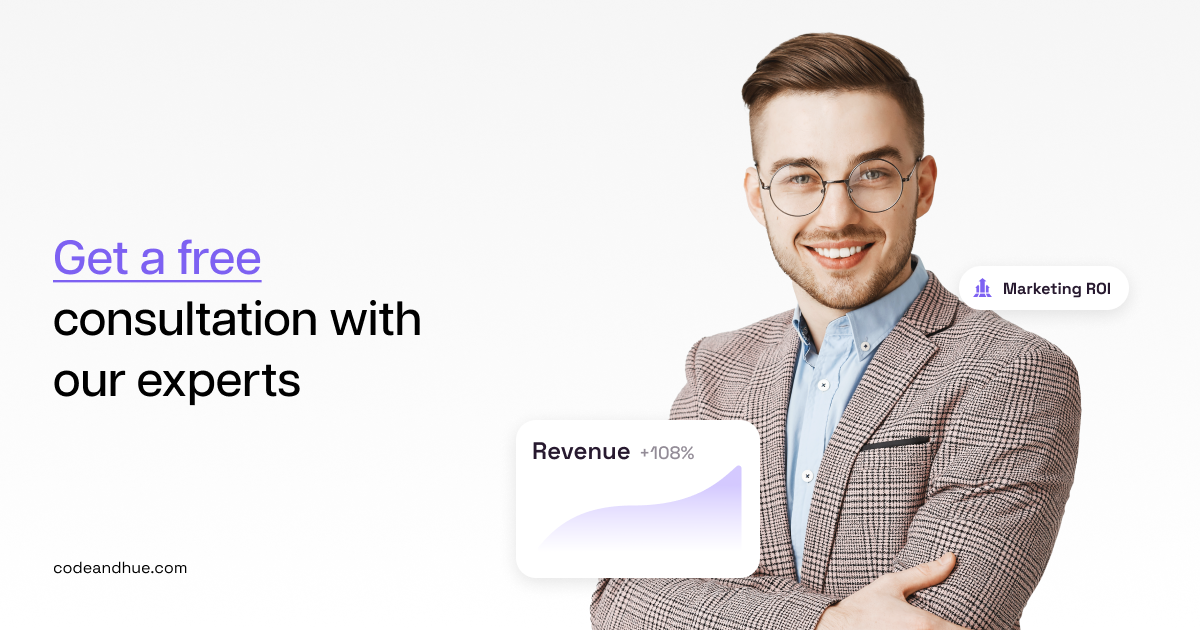In these current times of digitalization, it is important that you optimize how much money your adverts cost so that every invested penny gives back more than it takes away during advertising time. But no matter if one sells just IT services or only software programs or acts as a consultant at large firms, where one puts their ad dollars has an effect on profits made by the day’s end.
Understanding the intricacies of different advertisement platforms and leveraging data-driven campaign strategies to achieve ROI expectations can significantly enhance businesses’ results.
This article will explore the best practices for optimizing ad spend, common pitfalls, and benchmark metrics you need to monitor to ensure your investments in marketing campaigns yield maximum ROI.
Why do marketing campaigns fail?
Marketing initiatives and advertisements are perhaps some of the most effective tools that can help in the formulation of a marketing strategy to attract people to a business and make them their loyal patrons. Of course, it is always possible that the result turns out to be exactly the opposite of what you imagined. The worst thing that I see is when instead of making potential consumers interested in you, a program makes them go the other way and even generate a PR problem.
The question is, what would you do to ensure that this is not another disaster that people complained of having invested in?
To answer the question, let me provide you with the list of main reasons why marketing campaigns fail:
No company knows each of its target customers as they should be known.
The advertisement platform finds faults in your campaigns due to the lack of proper campaign optimization but informs you that your ad budget is too small.
For many people, their campaign doesn’t have a clear message to convey.
Your campaign messages don’t stand out compared to your competitors.
The target audience that saw your campaign was not broad.
You lack the proper expertise or your team doesn’t have the right experts to execute and run the planned marketing campaign effectively.
Understanding the concept of marketing ROI in campaigns
Before we get into the strategies for optimization, we must understand the concept of marketing ROI. The profitability of such an investment per unit of money spent shows how efficiently advertisements translate into sales.
Typically, return on investment is calculated for marketing campaigns as follows:
Marketing ROI = ( ( Revenue Generated from Campaigns − Cost of Campaigns ) / Cost of Campaigns ) ) x 100
For example, an E-commerce company runs a marketing campaign that costs $12,500 if the revenue generated through running this marketing campaign is $85,000.
Using the Marketing ROI formula:
Marketing ROI = ( ( 85000 − 12500 ) / 12500 ) ) x 100 = 508%
The E-commerce company’s marketing ROI is 580%, which means the company generated revenue almost seven times the marketing campaign invested amount.
Determining and improving return on investment depends on key measures such as conversion rates, cost per acquisition (CPA), and lifetime value of customers (LTV).
- Conversion Rates: Conversion rate is the percentage of users who take a desired action out of the total number of visitors interacting with a campaign. This action could be purchasing, filling out a form, signing up for a newsletter, or any other goal the business sets.
- Cost per Acquisition (CPA): Cost per acquisition is the amount spent on a campaign to acquire a new customer or lead. It measures the total cost of a campaign divided by the total number of conversions received.
- Lifetime Value of Customers (LTV): The lifetime value of a customer is the total revenue a business can expect from a single customer account throughout the tenure he is connected with the company. LTV helps businesses understand customers’ long-term value that goes beyond their initial purchase or transaction.
Steps to improve your marketing ROI & how to avoid common pitfalls
Imagine transforming every marketing dollar you spend into a money train that can drive your business to global expansion. Yet, many companies need help with the most common pitfalls that drain their capital resources and hinder them from reaching their growth destination.
Our detailed guide will help you understand all the steps to increase your marketing ROI and teach you how to sidestep these expensive campaign mistakes, ensuring your campaigns achieve maximum impact.

1. Define ROI objectives
Set clear marketing objectives
Optimizing your Ad spending is essential to maximize the effectiveness of your marketing campaign budget. This process begins with you defining your clear marketing objectives to ensure that every campaign you launch is aligned with your long-term business strategy.
Specific: It is important to identify your objectives when deploying your ad campaigns explicitly. Rather than having a woolly notion such as ‘generate more sales’, you must have measurable and time-bound objectives like, ‘generate 20% more online sales of IT solutions in the next 6 months.’
Measurable: Set measurable targets that will help in assessing the advancement and effectiveness of the training program. Some examples would be the number of people visiting the site, the number of people subscribing, the number of leads generated, or the actual number of clicks per advertisement spent.
Achievable: Choose challenging yet marketing objectives. It should be acknowledged that business development planning should take into account such factors as the current resources, budget constraints, and market realities to know what can be done.
Relevant: Make sure that stated marketing objectives correspond to the company’s strategic visions. So, for example, if your business is involved in offering cloud computing solutions, your advertisement campaign objectives should entail targeting potential clients in the cloud solutions space.
Time-bound: Every business objective should have a set date through which they should either have been met partially or in full. This makes work more aligned to the clock and organises work flow in a way that helps do so effectively and efficiently. For example, “ generate 15% more sales qualified leads in the next three months.
2. Establish ROI goals
Ensure that you have long-term marketing ROI goals
Clear ROI goals are necessary for maximizing the effectiveness of your ad expenditure. They provide direction, enabling you to pinpoint who you want to reach, what message to deliver, and how much to invest.
- Provides direction: Goals define what you want to achieve with your ad expenditure. Specific goals give direction to your ad spending efforts by helping you determine what you want to achieve with it. They inform decisions on who to reach out to, what message to pass, and how much should be spent on the same.
- Facilitates measurement: For example, with certain goals defined in the marketing campaigns, one can be able to quantify the success of the campaigns. This makes it possible for you to manipulate data and be able to request improvements that are in line with the best performance.
- Enhances focus: Goals, as with priorities, assist in the proper arrangement of activities and resources. They reduce interference and guarantee that work is only focused on those endeavours that promise to generate the preferred results.
3. Audience targeting
Responsibly identify your target audience
Effective audience targeting and segmentation are crucial for any marketing strategy. By identifying your ideal client based on demographics, behaviors, and interests, you can tailor your approach to reach the most relevant audience.
Identify your target audience: First, specify what kind of client can be considered an ideal one in terms of factors as to whether the client can be a part of any other group of.
Demographics: These factors can be age, gender, country of residence, income, and positions relevant to the IT service/solution your firm offers.
- Interests: The list of industries you might potentially sell your solutions to – these should be quite narrow and specific in this case (examples: healthcare, finance); work-related challenges that your solutions can address.
4. Audience segmentation
Find ways to segment and categorize your audience
Segmentation offers several key advantages that can significantly improve your marketing efforts. By personalizing your messaging for a specific audience, you can optimize response rates and engagement.
Personalized messaging: Exponentially, it is feasible to reorient the theme of appeals to accommodate subgroups and, in effect, optimize the response rate.
Efficient ad spend: This spend can be minimized since most of your advertising budget will be focused on prospects, who have the greatest likelihood of purchasing your product.
Improved customer relationships: To enhance the status of actual and potential customers, the organisation must enhance its level of interaction with consumers, with special emphasis directed at specific segments and their requirements.
5. Choosing the right advertising channel
Find high-performing advertisement channels that work for your business
Pick those channels that are in line with how the people you hope to reach behave or what they prefer. They include:
- Google ads: Those people who are looking for IT solutions.
- LinkedIn ads: Companies who offer services to other businesses and are trying to get in touch with their employees in order to make purchases can use LinkedIn ads to achieve this goal more effectively.
- Other social media channels: These include Facebook, Instagram, and Twitter, where users have different interests and demography.
6. Planning marketing funds allocation
Allocate marketing budgets for different campaigns and focus on benchmark metrics that matter
Effective budget distribution is necessary for maximizing the marketing ROI from your campaigns. Developing a distribution plan will be based on factors like:
The distribution plan: Plan for the budget depending on the probable return on investment from each media. In making your decisions consider factors like cost-per-click (CPC), the conversion rate as well and how broad your audience is.
Optimization tips: Periodically check the Click-Through Rates (CTR), conversion percentage as well as return on investments on advertisements so you are aware of how effective they have been.
Reallocate budget: Channel more resources to channels that have better returns on investments.
Experiment with A/B testing: Aim is to come up with different insights when it comes to improving how ads are designed or targeted for improved performance results.
7. Utilize analytics tools
Use tools that can deliver data-driven marketing campaign insights
For real-time monitoring of your campaign performance, implementing analytical tools like Google Analytics, Facebook Insights, or even LinkedIn Analytics is crucial to making informed decisions.
Data-driven insights are beneficial as follows:
- Itemize trends: Know what is successful or not successful about your campaigns.
- Decide wisely: Tailor your decisions based on targeting insights, messaging insights, or budgetary insights.
- Always optimize: Make iterative upgrades following data analysis for full efficiency of your advertising budget.
8. Conversion rate optimization
Put more emphasis on increasing the conversion count.
By optimizing landing pages, Calls-to-action (CTAs) and user experience (UX) you can boost your conversation rates.
Some of the effective CRO strategies include:
Target audience-focused landing pages: Design specific landing pages targeting different demographic groups.
Strong CTAs: Employ potent and direct CTAs to prompt an action a customer needs to take.
A/B testing: Try out alternative versions of landing pages, Calls-to-action, or UX elements to find out what is most appropriate.
9. Performance monitoring & reporting
Prepare detailed dashboards
Effective performance monitoring and reporting are essential for tracking and optimizing your marketing campaigns. They are used to track major performance indicators (KPIs), like the cost for every click (CPC), acquisition cost per client (CAC), and total campaign return on investment (ROI).
Principles of report writing include:
Frequent appraisals: On a regular basis, check how well different aspects are doing so that we can spot patterns as well as know where more work is needed.
Actionable insights: Capitalized reports will provide actionable insights that can help you determine your strategic plans.
Transparent communication: Keeping in the know and getting in line is what everybody needs when it comes to stakeholders about their performance insights.
How do you need to plan to meet your marketing ROI expectations?
For search ads
We can divide search campaigns into four main groups: funnel classification includes the following: top funnel, bottom-funnel, branded, and competitor. Essentially, what ROI is going to look like is going to be different for each one. This way, you can measure in what areas you should be getting the most amount of returns from the marketing campaigns and where to expect people to be converting.
Branded
Some Google Ads users are very reluctant to bid on branded terms because even if a person clicking on that branded ad will convert, he may not be an ‘intent ‘or a ‘first-timer’. That said, it does not eliminate the fact that branded terms are valuable in terms of ROI. This will make the quality score reach its maximum capabilities. volume/competition likely isn’t high compared to the head terms.
Top of funnel
These are your research-based terms; for the understanding of the reader, we are going to name these terms as follows. Simply because the ROI will be less here than what we get in branded or bottom-of-the-funnel campaigns, you need to be aware of what’s working best and what is not. Flexibility is key here: if a top-of-funnel term is converting, then flag it because it is a good thing. On the other hand, don’t just spend money to spend money: more likely, there are some variations of the keywords that you use here that perform better and cost less. Sample those out of your search queries and observe your ROI go through the roof.
Bottom of funnel
Bottom-of-funnel keywords are described as specific or high search volume terms with a significantly lower search volume than top-of-funnel keywords compared to top-of-the-funnel keywords, which makes for less competition and therefore relatively lower average CPCs. An understanding of these keywords can enhance your Google Ads ROI rates.
Competitor
It was also necessary to take into account how the potential conversion rates will impact the ROI and decide on bidding for competitor terms based on this factor. Leveraging on competitor terms could be costly and may not always produce the nature of leads that one would wish to have. However, it is beneficial since it can improve or generate ROI whenever you bid on the keywords of rivals. Instead of increasing bids, allowing remarketing lists keeps the advertisement from showing up to people searching for specific competitor terms unless those decreasing the marketing expense are reheating former leads who can always come back to the site.
For display ads
Growing advertisers, particularly those who have never advertised on Google may be tempted by the high impressionability of display network and think it’s as easy as other traditional means of advertising like billboards. Thus, the targeting options that are rather broad compared to those available in Search could be similar to the traditional advertising spaces available on display. As for banners, pop-up banners located in random applications may give several clicks less than any search campaign.
One positive is that advertisers, for example, pay by cost per click, and with CPC bidding, they pay every time someone clicks on the ad. Also, the visibility obtained from placing the banners close to the web content of interest is free. Display ads can be best explained when the person who saw a banner ad ends up searching for the particular brand and buys it after clicking on an ad.
Overall, when using display ads, it is best to apply the targeting techniques to advertise in the appropriate places successfully. Although website targeting and keyword targeting make e-commerce brands more familiar to the audience, it does not necessarily mean that the level of conversion will be high. However, its use to re-market to site visitors or serve ads using an email list can be considered to have a high return on investment.
Avoid putting a cap on how much money you are willing to spend on remarketing and try out as many targeting options as possible that will help you discover which ones are the most effective in getting more leads or revenue. Still, there is a need for optimization to improve the effectiveness of the chosen targeting methods even more.
How Code & Hue can help you?
We specialize in delivering cutting-edge IT services and solutions designed to optimize your digital marketing efforts.
Here’s how we assist you in maximizing ROI from your ad spending:
Expert consultation
Benefit from our team’s expertise in digital marketing strategies tailored for IT services. We analyze your current marketing efforts, identify optimization opportunities, and create customized plans to enhance your ROI.
Advanced analytics
Take advantage of our advanced analytics tools to learn more in-depth details about the effectiveness of your campaigns. To enhance conversion rates, optimize the efficiency of your advertising budget, and fine-tune targeting, we employ data-driven strategies.
Tailored solutions
Get tailored suggestions and approaches that complement your company’s goals. Our solutions are customized to match your unique needs, whether you need help with PPC campaigns, social media advertising, or comprehensive digital strategy.

Conclusion
To improve your returns on investment through advertisements, you must come up with effective strategies that focus more on your target group, data analytics, as well as an iterative process that changes every time there is a need for improvement. By following such a process—setting smart goals; identifying the appropriate audience members; choosing the best channels; fine-tuning based on statistics—you will definitely realize greater benefits from marketing activity involving IT service provision and related products.
Ad spending optimization is a process that evolves continuously alongside market trends along with consumer behaviors; it’s important to keep this in mind. To achieve sustainable ROI growth, always make data-driven decision-making a priority; be agile and experiment using new strategies
Would you like your ad budget to be more optimized?
Reach out to Code & Hue today and request advice free of charge. Our specialists are available for coaching and support in maximizing your marketing efforts leading to stable growth of your profits. Connect with us at [email protected].



